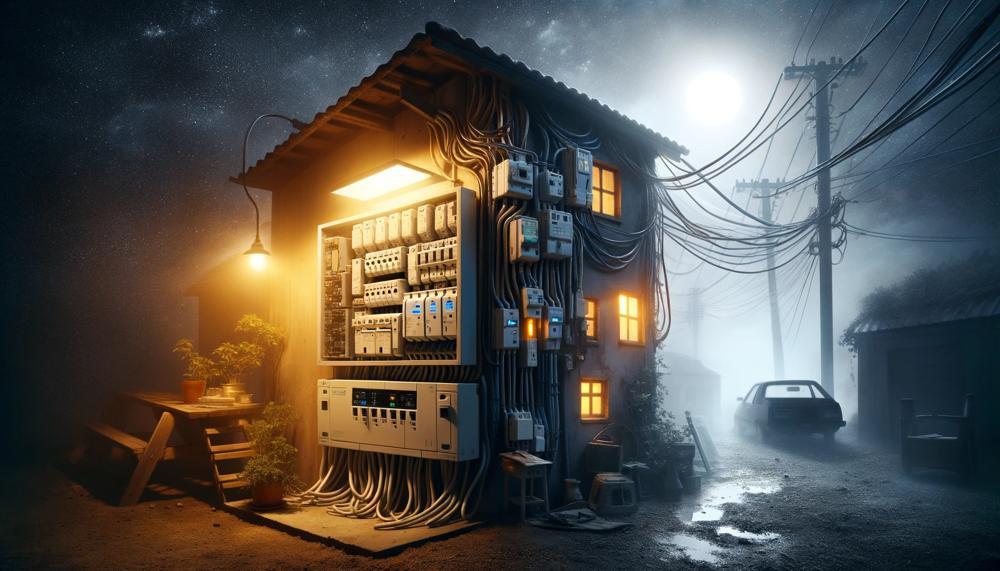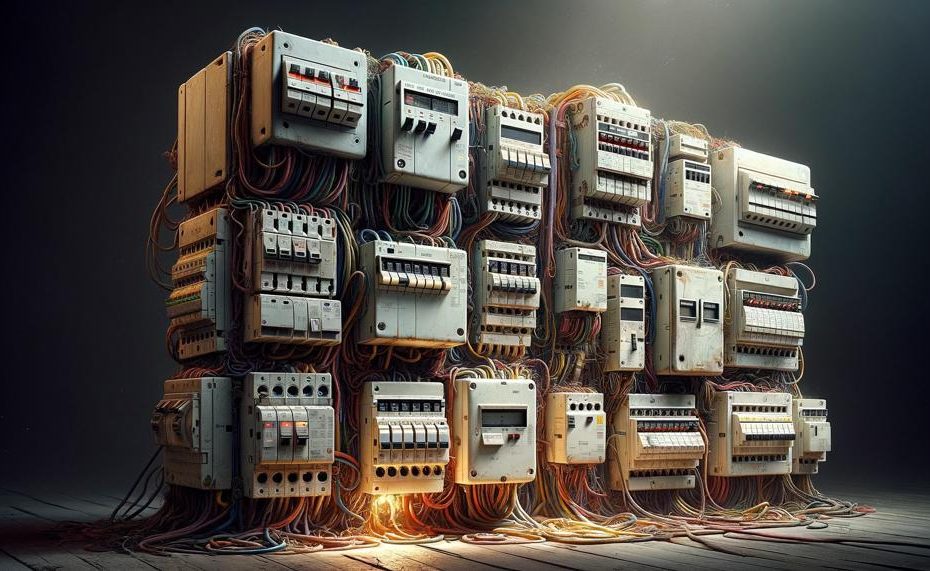Welcome to our blog post where we delve into the world of breaker boxes and examine the distinctions between indoor and outdoor options.
As homeowners, it is crucial to comprehend the distinct characteristics and purposes of these electrical panels in order to guarantee the safety and effectiveness of our homes. Whether you are a DIY enthusiast or simply curious about home maintenance, this article will offer valuable insights on how indoor and outdoor breaker boxes differ in terms of their design, installation process, and upkeep.
So sit back, grab a cup of coffee, and join us on this enlightening journey.
Contents
Comparison
When tackling home improvement projects, one crucial factor to contemplate is the positioning of your electrical breaker box. While both indoor and outdoor breaker boxes serve the same purpose of distributing power throughout your property, there are significant discrepancies that require careful consideration before reaching a conclusion.
Here, we will delve into the primary distinctions between indoor and outdoor breaker boxes to assist you in making an educated decision for your DIY endeavors.
Location and Weather Endurance
The most conspicuous contrast between indoor and outdoor breaker boxes is their placement. As implied by the names, an indoor breaker box is typically installed inside your abode, usually in a basement or utility room.
Conversely, an outdoor breaker box is mounted on an exterior wall of your house, typically near the electrical meter. This difference in location also impacts their weather resistance capabilities.
Outdoor breaker boxes are specifically engineered to withstand harsh weather conditions, such as rain, snow, and extreme temperatures.
In contrast, indoor breaker boxes are not designed to endure these elements and may necessitate additional safeguarding if situated in a damp or humid area.
Accessibility and Space
Another significant disparity between indoor and outdoor breaker boxes is accessibility. Indoor breaker boxes are easily reachable, making it convenient for homeowners to perform maintenance or repairs. They are also secure from potential vandalism or tampering.
On the contrary, outdoor breaker boxes can be challenging to access, particularly during inclement weather. They may also require additional enclosures or covers for protection, which can make maintenance or repairs more laborious.
In terms of space, outdoor breaker boxes tend to have more room to work with compared to their indoor counterparts. This can prove advantageous when conducting repairs or adding new circuits.
However, it’s crucial to note that outdoor panels may necessitate specific guidelines from the National Electrical Code (NEC) concerning fire hazards.
Can You Put an Electrical Panel Outside?
To begin with, one of the key advantages of having an outdoor electrical panel is its accessibility. This placement makes it easier for electricians to install and conduct maintenance on the panel in the future. Moreover, it provides a more streamlined look for your home’s facade. However, this also exposes the panel to external elements, which can result in damage and deterioration over time, thus posing a safety concern and requiring frequent checks.
There are other factors that must be taken into account as well, such as cost and protection. While an exterior wall location may require additional wiring and conduit, increasing the overall cost, it also offers protection from the elements, potentially extending its lifespan and reducing the risk of damage. On the other hand, an interior wall location may be more visible, detracting from the aesthetics of your home, but can prove to be challenging in terms of finding a suitable space.
Ultimately, the decision between an indoor or outdoor electrical panel should be based on a combination of factors, including the design of your home and personal preferences, as well as consulting with a professional electrician.
Safety should always be a top priority in this process. In conclusion, whether you choose to have your panel placed inside or outside, keep in mind that each option has its own set of advantages and disadvantages.
Can a House Have Two Electrical Panels?
The succinct answer is yes – a home can indeed have both an indoor and outdoor electrical panel. However, the more pertinent question is not one of possibility but rather one of necessity. To truly understand the need for two separate electrical panels, we must delve into the contrasting aspects of indoor and outdoor panels – durability, accessibility, and safety.
Durability:
The primary purpose of an indoor electrical panel is to safeguard the breakers and wiring from regular wear and tear. Typically constructed from metal or plastic materials, these panels are situated within the confines of a property, sheltered from the elements such as rain, snow, and extreme temperatures.
In comparison, outdoor electrical panels are built to withstand harsh weather conditions and are often composed of more robust materials like steel or aluminum. They also boast added features such as weatherproof covers to shield the breakers from moisture and debris.
Accessibility:
When considering accessibility, indoor electrical panels have a distinct advantage. Their placement within the property allows for easy access during maintenance or repairs. This also means they are less susceptible to damage or vandalism.
Outdoor panels, on the other hand, may prove more challenging to reach as they are often located in areas like backyards or basements that require additional keys or codes for entry.

Safety:
Safety is a significant concern when it comes to electrical panels. Indoor panels are generally deemed safer due to their protected location within the house. They are less vulnerable to external factors like severe weather or accidental damage and are also less prone to tampering or vandalism. However, in certain states, specific regulations mandate the use of an outdoor breaker box for safety purposes.
In such cases, it is vital to adhere to these guidelines to ensure the well-being of your property and its occupants.
Having both an indoor and outdoor electrical panel can also prove advantageous in emergency situations like fires.
Conclusion
In conclusion, the world of breaker boxes may seem overwhelming, but understanding their differences can help us make informed decisions for our homes. From placement and weather endurance to accessibility and safety concerns, there are many factors to consider when choosing between indoor and outdoor electrical panels.
Ultimately, the decision should be based on a combination of personal preferences and consultation with a professional electrician. Whether you choose an exterior or interior panel, prioritizing safety is crucial.
Remember, your home is your sanctuary, and it’s essential to ensure all aspects are functioning effectively and securely. We hope this blog post has provided valuable insights into the distinctions between indoor and outdoor breaker boxes.





